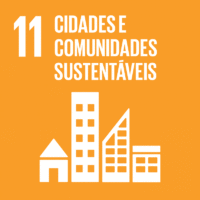Ciência_Iscte
Publicações
Descrição Detalhada da Publicação
ISTAR-IUL Winter School 2018 Applied Transdisciplinary Research
Ano (publicação definitiva)
2018
Língua
Inglês
País
Portugal
Mais Informação
Web of Science®
Scopus
Esta publicação não está indexada na Scopus
Google Scholar
Esta publicação não está indexada no Overton
Abstract/Resumo
Building Design Coordination is the process of communicating and integrating multidisciplinary designs into a single, coherent set of information that can be used for construction,
to anticipate problems that would otherwise only be raised on the construction site. As
projects grow in complexity and size, digital communication tools and other technological
improvements have made it possible for physically distant design teams to collaborate in novel
ways. More recently, BIM (Building Information Modelling), has opened even greater
possibilities, although the design process nevertheless is often one of trial and error,
demanding on each small change multiple possibilities to be considered, with decisions
requiring to be validated among designers and other project stakeholders. Regardless of all the
advantages that BIM has brought to the industry, testing for design changes in BIM models
often requires a big effort and is a time-consuming activity that should be avoided whenever
simpler processes can be used.
Further developments on this study will propose a framework for building design coordination,
using a non-relational graph database. The system can track design issues between unlimited users, organized into teams, handling formal project documents and keeping an historical
record of the design development timeline. Since all the information regarding the design
development process is stored in the form of Nodes and Relationships these can be intuitively
be manipulated making it easier for teams to provide input on design decisions in real time
with least cost impact to the project, providing at the same time access to pertinent
information on the status of design issues and how the various stakeholders are contributing
to the project. Through the use of reliable open source tools, a prototype can be implemented
and made available to the industry professionals for testing, providing guidelines for modelling
a Building Design Coordination system.
Agradecimentos/Acknowledgements
--
Palavras-chave
Registos de financiamentos
| Referência de financiamento | Entidade Financiadora |
|---|---|
| UID/MULTI/0446/2013 | Fundação para a Ciência e a Tecnologia |
Contribuições para os Objetivos do Desenvolvimento Sustentável das Nações Unidas
Com o objetivo de aumentar a investigação direcionada para o cumprimento dos Objetivos do Desenvolvimento Sustentável para 2030 das Nações Unidas, é disponibilizada no Ciência_Iscte a possibilidade de associação, quando aplicável, dos artigos científicos aos Objetivos do Desenvolvimento Sustentável. Estes são os Objetivos do Desenvolvimento Sustentável identificados pelo(s) autor(es) para esta publicação. Para uma informação detalhada dos Objetivos do Desenvolvimento Sustentável, clique aqui.

 English
English


